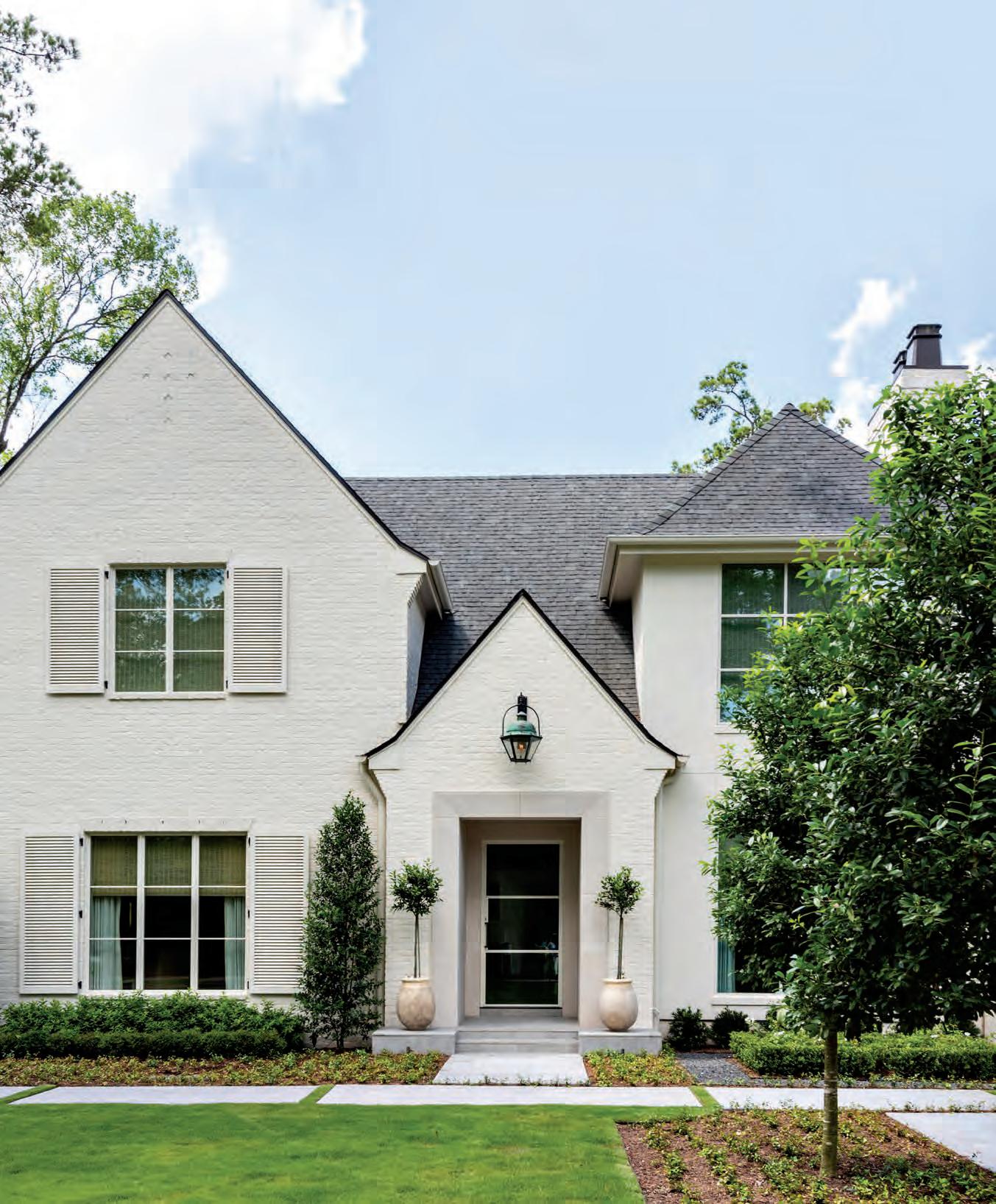
4 minute read
Starting Fresh
A Houston couple pares back while elevating the essentials.
WRITTEN BY CHRISTINE DEORIO PHOTOGRAPHY BY CLAUDIA CASBARIAN FOR JULIE SOEFER PHOTOGRAPHY
Advertisement
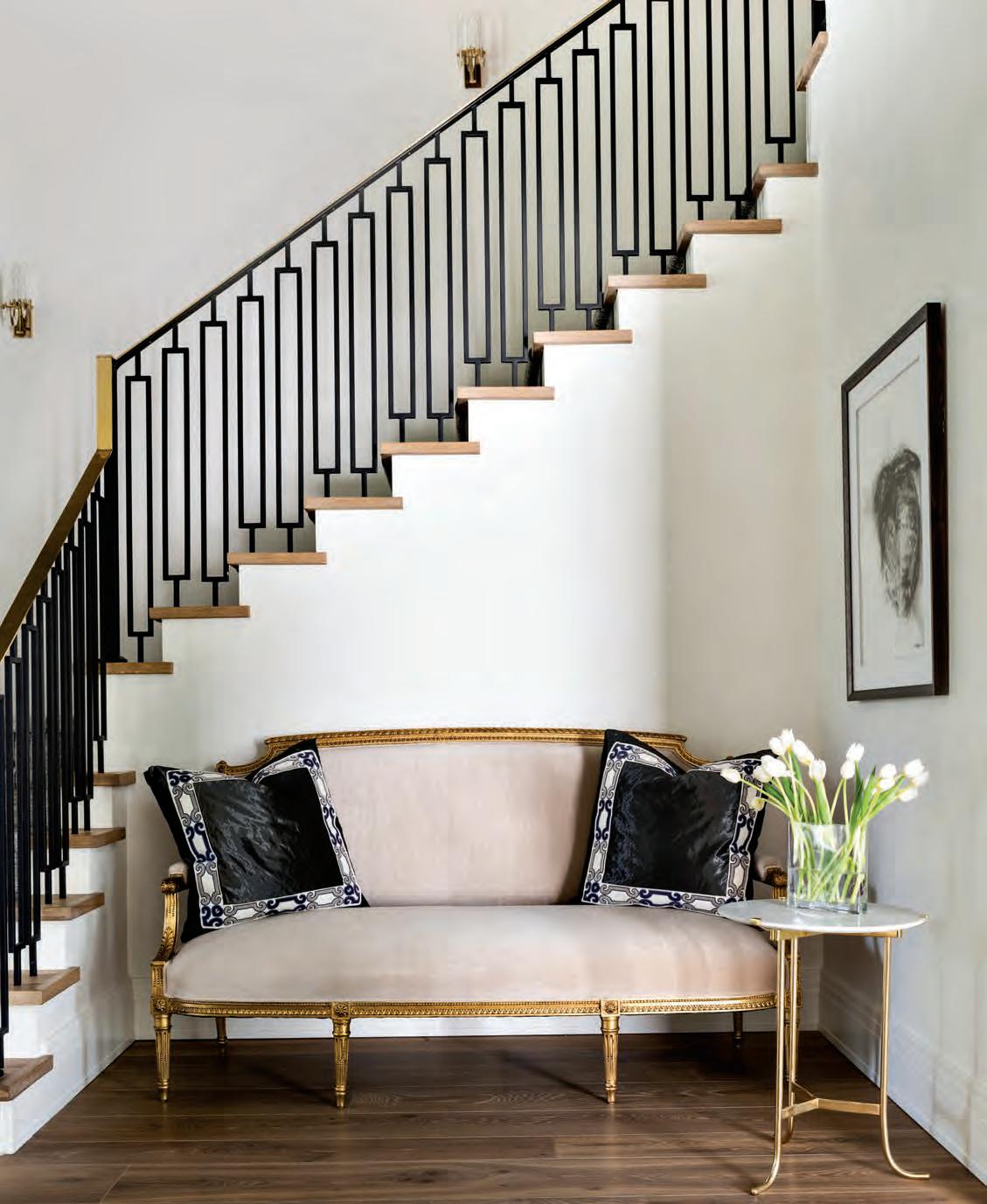
For many people, the passage of time coincides with the accumulation of possessions—and places in which to keep them. Bibbi and Tom Anderson had happily ridden that trajectory for years, filling their Texas homes with treasured collections of art and antiques. But as they embarked upon a life chapter as empty-nesters, they chose a different path: building a Houston home with just enough room to meet their needs and reflect their elevated tastes, honed during Tom’s years as co-owner of a luxury real estate company and Bibbi’s career as an artist.
“This project was about paring their lives back and having fewer things,” explains designer Chandos Dodson Epley, a longtime family friend who joined architect W. Travis Mattingly, builder Brian Thompson, whose project manager was Bobby Lawton, and Moss Landscaping in creating a custom residence complementing the clients’ new outlook and fresh, serene surroundings.
However, while the owners may have been willing to part with some of their furnishings, they had no plans to dial back the pursuits of their passions, including woodworking for Tom, painting for Bibbi and hosting lively gatherings. That meant the house would need a dining room that could accommodate 12 guests, an outdoor kitchen with a wood-burning pizza oven, a wood shop for Tom and a studio for Bibbi, not to mention bedrooms for visitors and an outdoor pool. “We gave that input to Travis, who molded it into a livable floor plan,” Bibbi says. “We were able to utilize every buildable space in this house and on this lot, which is not immense.”
That’s not to suggest concessions weren’t made. By the time Mattingly positioned the main-floor living areas, main bedroom suite, loggia, pool and wood shop, “There just wasn’t any footprint left for my studio,” Bibbi recalls. “So I pouted awhile, but Travis said, ‘Trust me, I will make your studio a place you’ll never want to leave.’ ” Located on the second floor, the resulting 440-square-foot space features a limestone fireplace displaying Bibbi’s artwork on tiers of integrated shelves. Reclaimed-wood ceiling beams and porcelain floor tiles masquerading as timeworn stone pavers emphasize the room’s inviting warmth, while large steel windows flood the space with light. “She particularly requested northern light,” Mattingly says, “and as a bonus, we got her southern light and a view of the backyard and pool.”
The owners’ love of art is equally evident in other rooms. “They have an extensive collection,” Epley says, “and we spent several days determining where all of their beloved works would hang.” Some pieces were placed specifically, like the still life commissioned to conceal the family room’s wall-mounted television while complementing chairs upholstered in soft bluegreen velvet. Other works found their places after the rooms were complete. “I always tell clients that placing art is like a dress fitting,” the designer explains. “Things may need to be moved and changed based on how they look in the room.”
Epley took a similarly intuitive approach when composing each room’s design details, which represent a range of styles. “We chose to have the bones be traditional,” she says, “but then went in with more modern plumbing and lighting for that juxtaposition.” Bibbi joined the hunt for cleanlined contemporary furnishings and patinated antiques, always taking the designer’s feedback to heart. “Bibbi has great taste,” Epley notes, “so it was really about editing her choices so the end result was what we had envisioned.” And that was often something quite daring: black-lacquered library walls, a pink-ceilinged dining room with a tortoiseshell faux-painted silver-cupboard door, horse-legged stools gathered alongside the kitchen island, and an illuminated, marble-clad bathtub.
To ground all that freshness, Epley employed organic textures such as reclaimed ceiling beams for the kitchen and family room, white-oak paneling in the breakfast room, an antique Empire chest-turned-vanity for the powder bathroom and antique louvered shutters on the loggia. “I wanted to mix modern touches with elements that have a bit of age,” says the wife. Adds the designer: “And that’s what made the transitional style work—giving it a little patina so those modern touches don’t feel too cold.” For the happy owners, that balance creates a space that’s as beautiful to inhabit as it is to view. “The goal was something fun and open to have people in,” Tom says, and the result is just that. “It is a real home.”

Walls painted Sherwin-Williams Roycroft Bottle Green make for a cozy media room featuring jet-black barn doors designed by Chandos Interiors and built by Thompson Custom Homes, which complement art by Stephanie Wheeler. Lee chaises flank an accent table from Area.
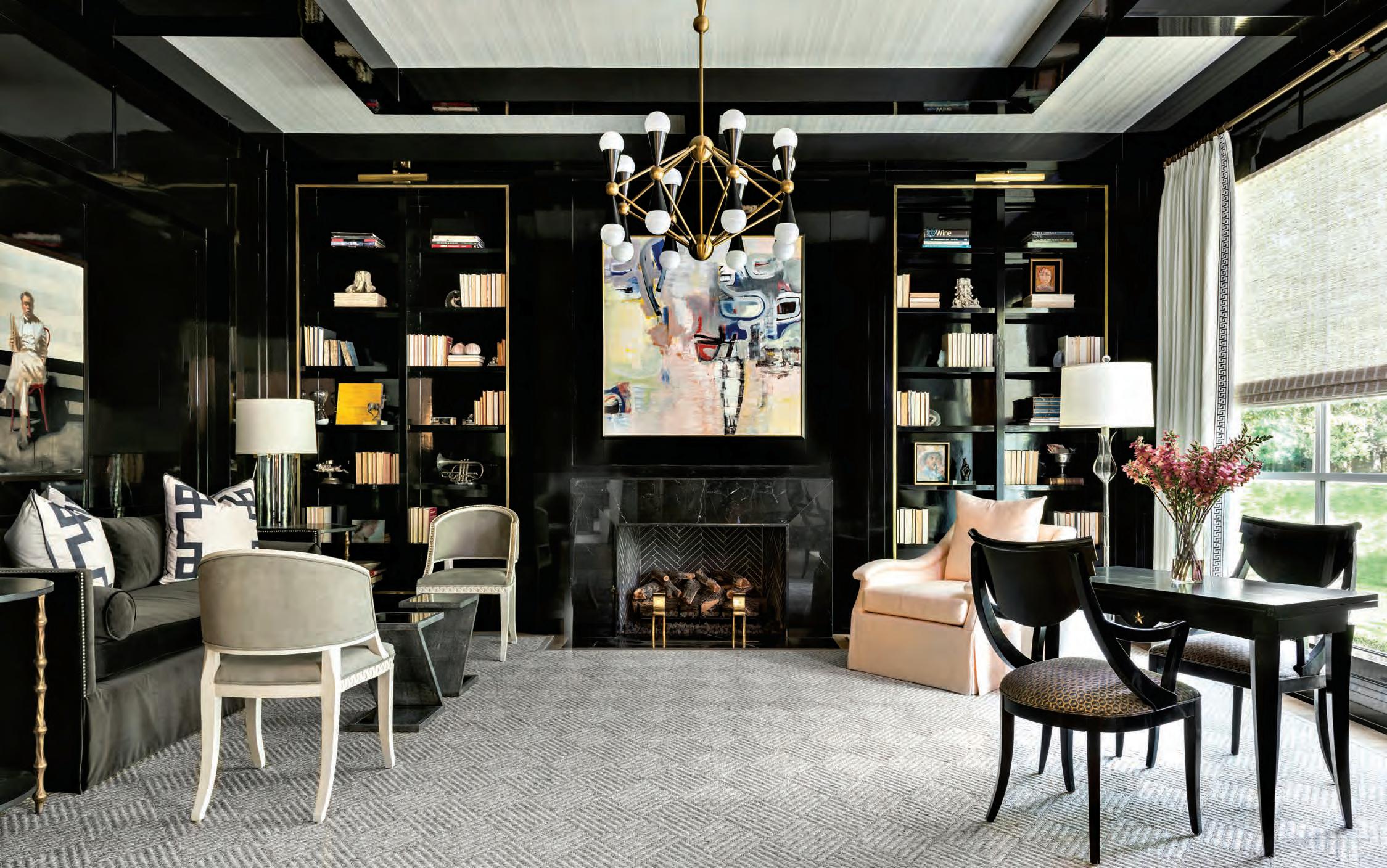
The library features a marble fireplace and walls in lacquered black paint by Fine Paints of Europe from Boxwood Interiors. Elsewhere are built-in shelves with custom brass detailing by Peck & Company, a Schumacher wallcovering on the ceiling and a Jonathan Adler chandelier. The abstract painting is by Alexis Portilla; the figurative work is by Michael Carson.

White oak appears on the breakfast room floors and paneled walls, from which hang a verdant painting by Jim Hill and a work by Bibbi Anderson from Anarte. The plaster Vincennes chandelier by Bourgeois Boheme Atelier was the final piece selected for the home.
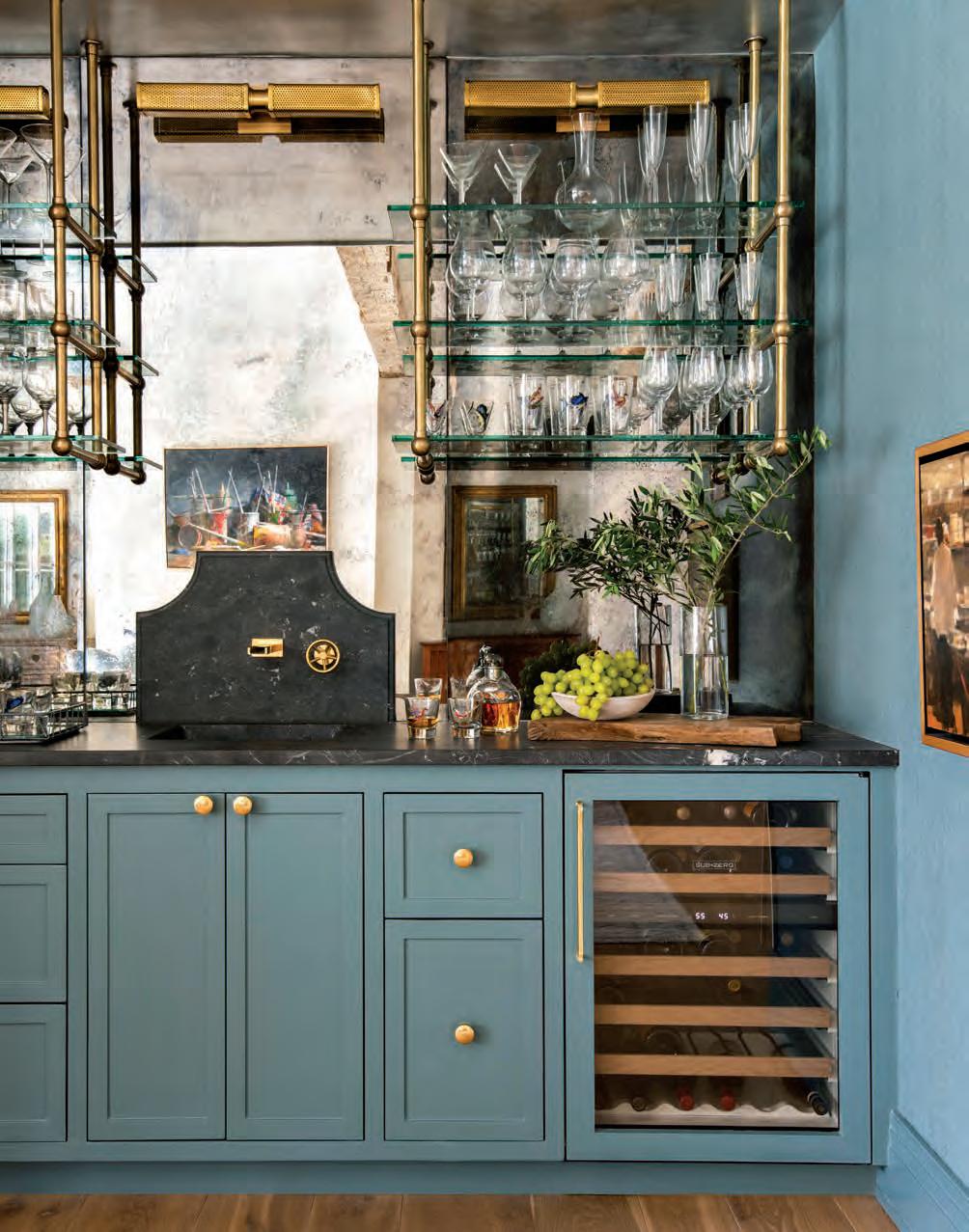
Sherwin-Williams Riverway brightens the bar area with its custom cabinetry, brass-and-glass shelves fabricated by Peck & Company and a metallic raffia wallcovering by Donghia.

A limestone fireplace with a custom two-tiered mantel warms the art studio. Framed by a pair of reclaimed wood beams, the Arteriors Vaughn chandelier adds drama with its substantial scale and glowing bronze finish.

Doors with a wood herringbone pattern designed by Chandos Interiors featuring brass knobs from Hollywood Builders Hardware open to a spacious second-floor art studio. Porcelain floor tiles from Pomogranit-ADR resemble timeworn stone pavers.

An antique French commode from Memorial Antiques & Interiors—topped with Kelly Wearstler’s Phoebe Stacked table lamp for Circa Lighting—imparts warmth in the main bedroom. Custom Matouk linens from Longoria Collection dress the bed.
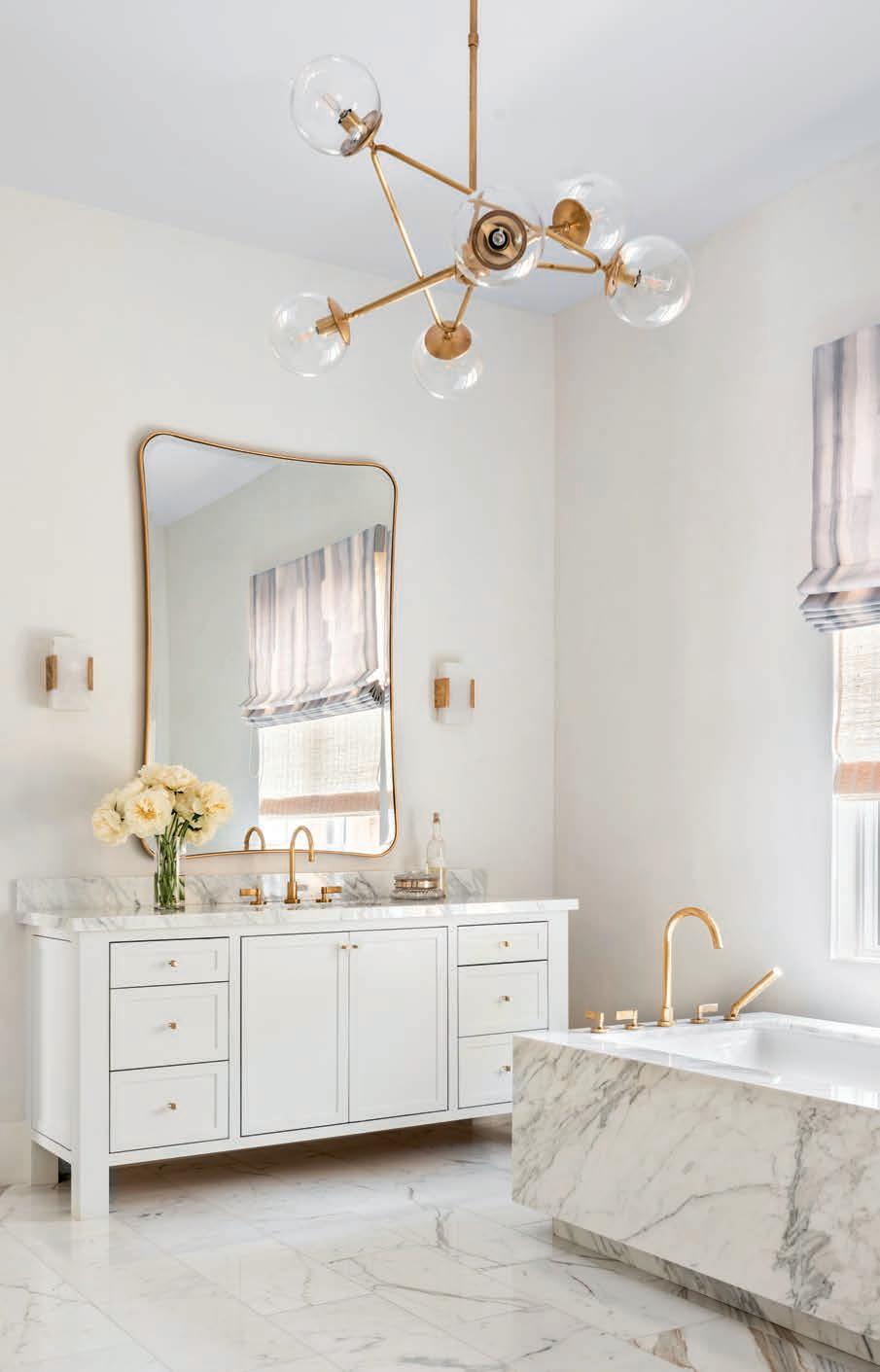
The main bathroom’s Calacatta Extra tub surround and countertops from Walker Zanger and Calacatta Daniele flooring from Ann Sacks blend with plastered walls in Sherwin-Williams Whitetail. The chandelier from Circa Lighting adds glamour.

